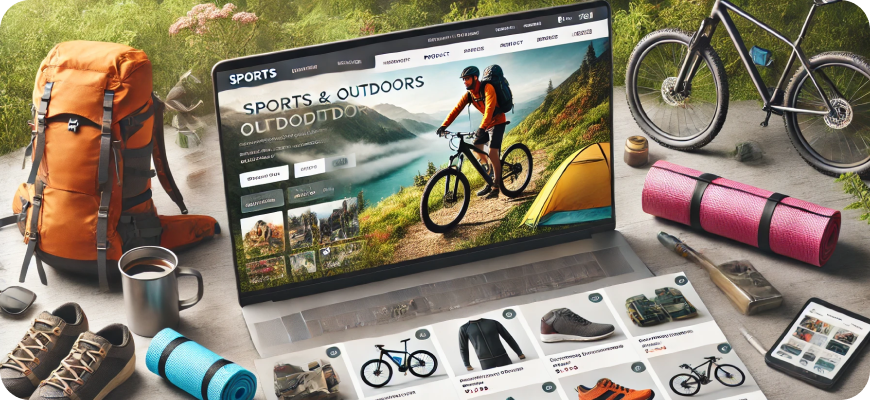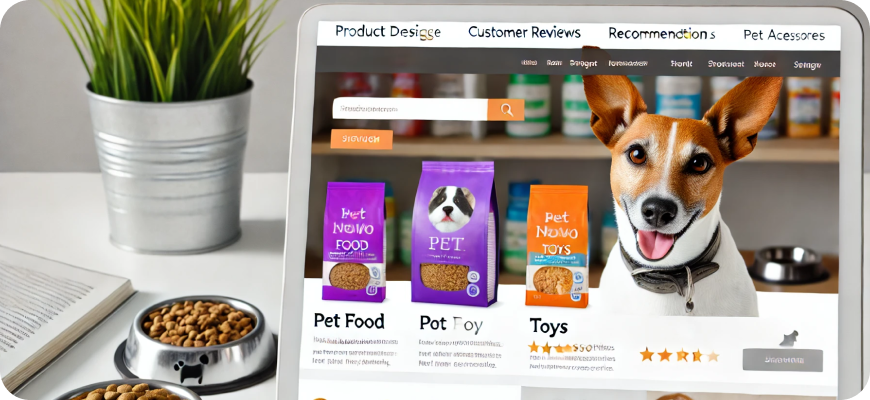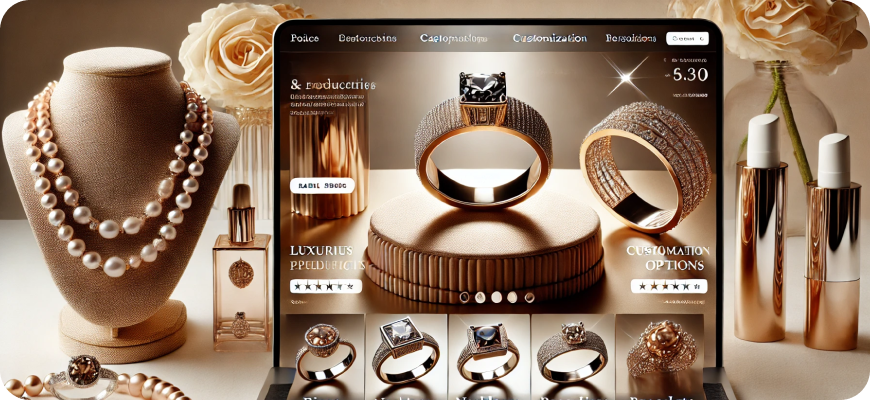Ecommerce Best Practices for Toys & Hobbies
The toys and hobbies e-commerce industry is vibrant and diverse, offering a wide range of products that spark creativity, fun, and entertainment for people of all ages. From children’s toys to collectible figurines, crafts, and model kits, successful e-commerce in this sector requires a combination of engaging content, seamless user experience, and a focus on safety and trust. To stand out in this competitive market, brands must cater to customer needs, create memorable shopping experiences, and build lasting relationships.
Here’s a comprehensive guide to e-commerce best practices for toys and hobbies businesses.
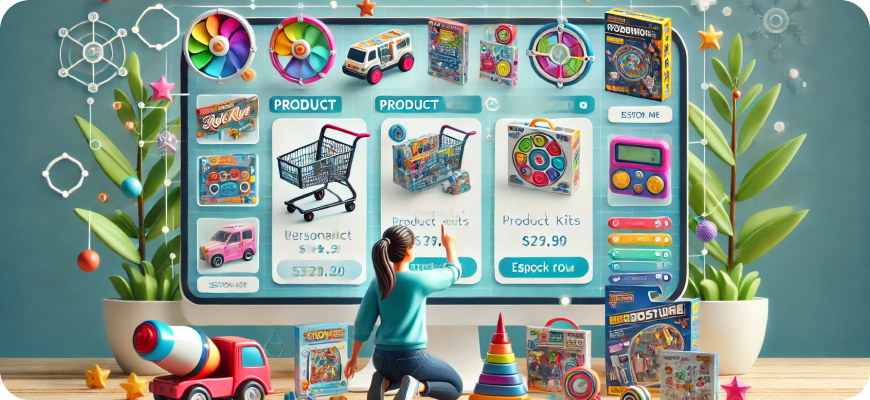
1. Showcase High-Quality Visual Content
Since customers can’t physically see or touch your products online, high-quality visuals are critical to capturing interest and building confidence:
- Multiple Product Images: Provide multiple high-resolution images of each product, showcasing different angles, packaging, and close-ups of key features.
- Lifestyle Photos: Include images of children or adults engaging with the products. This helps potential buyers visualize how the toy or hobby product will be used and enjoyed.
- Videos and 360-Degree Views: Offer product demonstration videos or interactive 360-degree views to give customers a better understanding of how the product works and what makes it special.
2. Focus on Safety and Compliance
Safety is a top concern when it comes to toys, especially for children:
- Age Appropriateness Labels: Clearly communicate the recommended age group for each product. Use consistent age labels to avoid confusion.
- Compliance Certifications: Display relevant safety certifications (e.g., ASTM, CPSIA, CE) on product pages to reassure customers of the product’s safety.
- Detailed Safety Information: Provide warnings and instructions for safe use, including information about small parts, sharp edges, or any potential choking hazards.
3. Offer Detailed Product Descriptions
Comprehensive product descriptions help customers make informed purchasing decisions:
- Specifications and Dimensions: Include accurate dimensions, weight, and materials used. This is especially important for hobbies that require precise fits, like model kits or building sets.
- Usage Instructions: Describe how the product works, key features, and any assembly or setup required.
- Unique Selling Points (USPs): Highlight what makes the product stand out, such as educational benefits, interactive features, or limited edition releases.
4. Leverage Personalization and Product Recommendations
Tailored shopping experiences enhance engagement and boost sales:
- AI-Driven Recommendations: Use AI to analyze customer behavior, preferences, and previous purchases to offer personalized product suggestions.
- Category-Specific Recommendations: Offer product suggestions tailored to specific interests, such as “Building Sets,” “STEM Toys,” “Collectibles,” or “Board Games.”
- Custom Bundles: Allow customers to build their own bundles, such as gift sets or themed hobby kits, tailored to their preferences.
5. Optimize for Mobile Shopping
Mobile optimization is crucial as many customers shop for toys and hobbies via mobile devices:
- Responsive Design: Ensure your website is optimized for mobile devices with intuitive navigation, touch-friendly buttons, and fast loading times.
- Mobile Checkout Optimization: Simplify the checkout process with mobile-friendly forms, auto-fill options, and support for digital wallets like Apple Pay and Google Pay.
- Mobile Apps: Consider developing a mobile app for a more immersive experience, with features like wish lists, notifications, and exclusive mobile-only promotions.
6. Create Engaging Content and Community
Building a community around your brand fosters loyalty and engagement:
- How-To Guides and Tutorials: Offer content that helps customers make the most of their toys and hobby products, such as “How to Build and Paint Your Model Kit” or “STEM Project Ideas for Kids.”
- Customer Reviews and User-Generated Content (UGC): Encourage customers to leave reviews, share their creations, or post unboxing videos. Feature UGC on your website and social media channels.
- Interactive Challenges and Contests: Host contests that encourage customers to showcase their creativity using your products, with prizes for the best entries.
7. Highlight Sustainability and Eco-Friendly Practices
Many customers seek out brands with a commitment to sustainability:
- Sustainable Materials: Highlight toys and hobby products made from eco-friendly materials, such as biodegradable plastics, recycled materials, or sustainably sourced wood.
- Recycling Programs: Offer recycling or trade-in programs for old toys and hobby supplies, incentivizing customers to make eco-conscious choices.
- Eco-Friendly Packaging: Use minimal, recyclable, or biodegradable packaging and communicate these efforts clearly to customers.
8. Provide Flexible Payment and Financing Options
Flexible payment options make your products more accessible:
- Multiple Payment Methods: Accept a variety of payment methods, including credit/debit cards, digital wallets, and bank transfers.
- Buy Now, Pay Later (BNPL) Services: Offer installment payment options through services like Klarna, Afterpay, or Affirm, particularly for higher-priced items like collectible sets or specialty hobby kits.
- Discounts and Promotions: Run seasonal promotions, discounts for first-time buyers, or limited-time sales to boost engagement and sales.
9. Focus on SEO and Content Marketing
Strong SEO and content strategies help drive organic traffic:
- Keyword Research: Target relevant keywords in product pages, blog posts, and meta tags, such as “Best STEM Toys for Kids,” “Model Train Sets,” or “Creative Art Supplies.”
- Educational Content: Create blogs, videos, and guides that provide valuable information on topics related to toys and hobbies, like “Benefits of STEM Toys for Development” or “Top Collectibles of the Year.”
- Voice Search Optimization: Optimize content for voice search, which is increasingly popular for product searches and FAQs.
10. Offer Seamless Checkout and User Experience
Reducing friction in the checkout process minimizes cart abandonment:
- Guest Checkout Option: Allow customers to make purchases without creating an account.
- Progress Indicators: Show a progress bar during the checkout process to reduce uncertainty and encourage completion.
- Auto-Fill and Security Features: Use auto-fill for payment and shipping forms, and ensure strong data security measures for peace of mind.
11. Provide Exceptional Customer Support
Responsive and knowledgeable customer support sets your brand apart:
- Live Chat and Chatbots: Offer 24/7 live chat support for customer inquiries, with chatbots handling common questions and human agents available for complex issues.
- FAQ Section: Maintain a comprehensive FAQ section addressing common questions about products, shipping, returns, and safety concerns.
- Follow-Up Communication: Send follow-up emails after purchases to ensure customer satisfaction, solicit feedback, and offer product tips.
12. Implement Loyalty Programs and Referral Incentives
Loyalty programs encourage repeat purchases and referrals:
- Points-Based Rewards Program: Offer points for purchases, referrals, and reviews, which can be redeemed for discounts, exclusive products, or special experiences.
- Exclusive Perks for Members: Provide loyalty members with early access to sales, new product launches, or limited-edition releases.
- Referral Programs: Incentivize customers to refer friends and family by offering rewards for successful referrals.
13. Use Interactive and Immersive Experiences
Interactive content can engage customers and simplify buying decisions:
- Product Customization Tools: Offer tools that allow customers to personalize products, such as custom toy sets or hobby kits.
- Augmented Reality (AR) Experiences: Implement AR tools that enable customers to visualize products, like placing a toy in their room or seeing how a hobby project will look when completed.
- Quizzes and Interactive Tools: Use quizzes to help customers find products based on their interests, skill levels, or age groups.
14. Highlight Promotions and Seasonal Campaigns
Seasonal campaigns can boost sales and engagement:
- Holiday Promotions: Run promotions for major holidays, such as Christmas, Easter, or Back-to-School season.
- Limited-Time Offers: Create urgency by offering flash sales, limited-time discounts, or exclusive products.
- Bundle Deals: Offer themed bundles that include complementary products, such as “Summer Fun Packs” or “Family Game Night Bundles.”
15. Emphasize Fast and Reliable Shipping
Shipping is a critical part of the customer experience, especially for gifts and holidays:
- Multiple Shipping Options: Offer a range of shipping options, including expedited and same-day delivery.
- Real-Time Tracking: Provide real-time tracking information so customers can monitor their orders from dispatch to delivery.
- Eco-Friendly Shipping: Use eco-friendly packaging and communicate any sustainable shipping practices to customers.
16. Ensure Compliance with Industry Standards
Compliance with regulations ensures customer safety and builds trust:
- Product Testing and Certification: Ensure all products meet industry safety standards and display relevant certifications.
- Age Appropriateness and Warning Labels: Clearly label products with age appropriateness and include warnings for small parts or other safety hazards.
- Clear Product Descriptions: Ensure accurate product descriptions and avoid misleading claims to comply with advertising regulations.
17. Leverage Data Analytics for Growth
Data-driven insights help you optimize your business:
- Customer Behavior Analysis: Use analytics tools to track customer behavior, including browsing patterns, purchase history, and engagement.
- A/B Testing: Test different product pages, checkout flows, and promotional messages to determine what works best.
- Retention Metrics: Monitor customer retention rates, repeat purchase rates, and churn rates to identify areas for improvement.
18. Utilize Social Media for Engagement
Social media is a powerful tool for building a community around your brand:
- Shoppable Posts: Use platforms like Instagram and Facebook to create shoppable posts, making it easy for customers to purchase directly from their social feeds.
- Interactive Content: Share engaging content, such as polls, challenges, and Q&A sessions, to foster community engagement.
- Collaborations with Influencers: Partner with toy and hobby influencers who can authentically showcase your products through reviews, tutorials, or demonstrations.
19. Optimize Shipping and Delivery Experience
Efficient shipping and delivery enhance customer satisfaction:
- Transparent Shipping Costs: Clearly communicate shipping costs, delivery times, and any restrictions upfront.
- Free Shipping Offers: Offer free shipping on orders above a certain value to encourage larger purchases.
- Damage-Free Guarantee: Implement policies to replace damaged items quickly, reassuring customers of their purchase safety.
20. Ensure Consistency Across Channels
Consistency in branding and messaging builds customer trust:
- Omnichannel Presence: Offer consistent experiences across your website, mobile app, social media, and physical stores (if applicable).
- Unified Customer Support: Ensure your customer support team is trained to handle inquiries consistently across all channels.
- Consistent Promotions and Messaging: Keep your promotional messaging and brand voice consistent across all marketing channels.
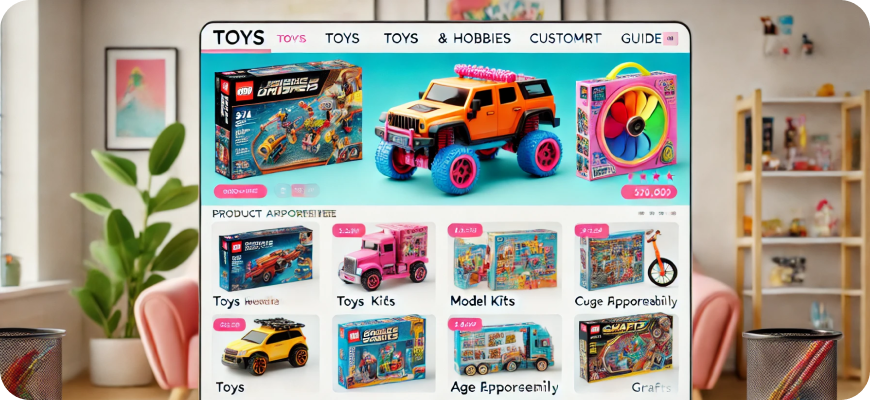
Conclusion
E-commerce for toys and hobbies thrives on creativity, engagement, and trust. By focusing on customer experience, offering personalization, leveraging engaging content, and ensuring safety and compliance, brands can build strong connections with their customers. Success in this market requires continuous innovation, a commitment to quality, and a deep understanding of what resonates with your audience. Follow these best practices to create a memorable shopping experience, drive customer loyalty, and achieve long-term success.
This guide outlines the essential strategies and techniques to grow your e-commerce business in the toys and hobbies sector and make lasting impressions on your customers.

